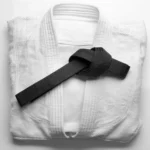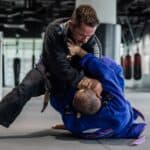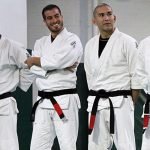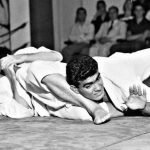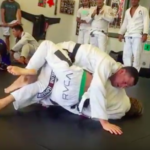When it comes to Brazilian Jiu-Jitsu, there are two main schools of thought – Gi and No-Gi.
The former involves practitioners adorning a traditional kimono-style uniform, the “Gi,” transforming it into a tool for various grips and control techniques.
The latter, No-Gi, takes away this advantage, emphasizing speed, agility, and pure grappling, as participants sport tight-fitting athletic attire akin to wrestling gear.
The Gi vs No-Gi debate is not just about a dress code—it significantly affects tactics, techniques, and the overall rhythm of a bout, making it a central, fascinating choice in the journey of every BJJ practitioner.
In this article, we will take a closer look at the differences between Gi and No-Gi BJJ.
What Is Gi Jiu Jitsu
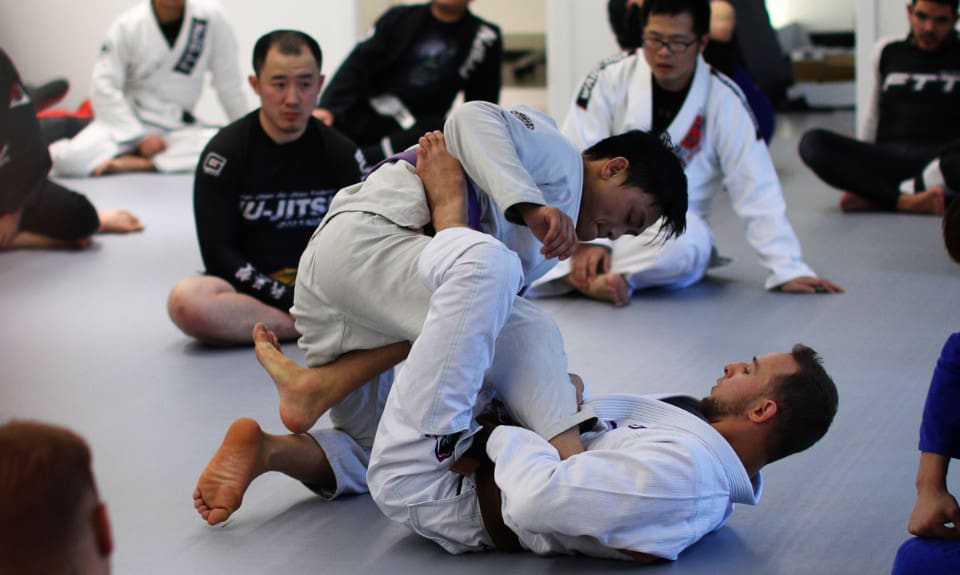
In Brazilian Jiu-Jitsu, the Gi refers to the traditional uniform that is worn during training and competition. The Gi is typically made from heavy cotton fabric and consists of a jacket, trousers, and a belt. The main objective of wearing the Gi is to provide both practitioners with a greater level of grip. This allows for a more technical and strategic game.
Learn more about BJJ Gis here.
What Is No-Gi Jiu-Jitsu?
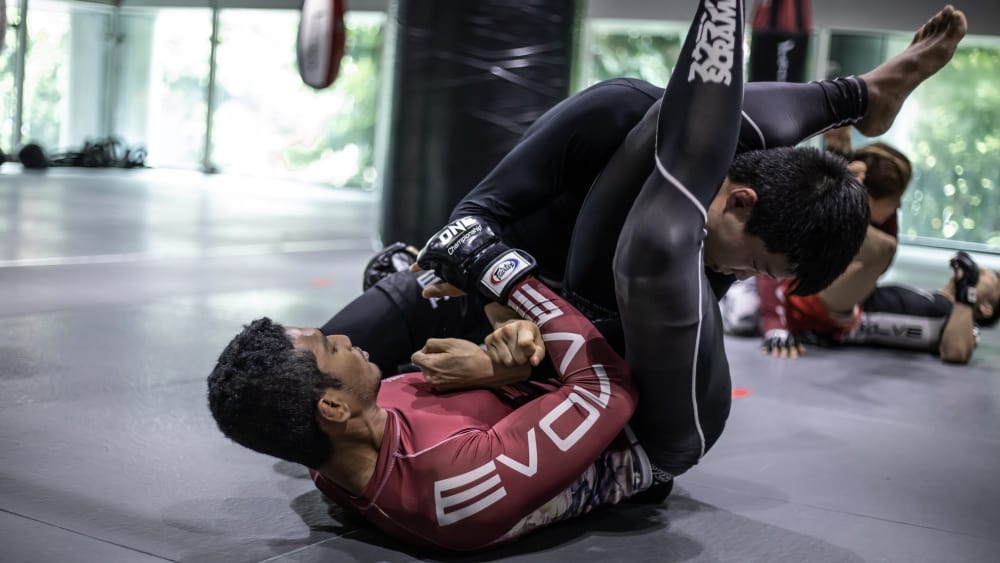
No-Gi Jiu-Jitsu is a Brazilian Jiu-Jitsu style that does not use the traditional Gi uniform. In No-Gi, practitioners typically wear shorts and a tight-fitting shirt (a rash guard). The lack of the Gi uniform provides different challenges for both practitioners. For example, less grip is available, leading to a faster-paced, more athletic game. The rash guard also provides protection from mat burn.
The Key Differences Between Gi And No-Gi BJJ
The first and most obvious difference is the attire. In Gi BJJ, practitioners wear a traditional kimono-style uniform known as a gi. This gi provides a number of advantages, including the ability to grab onto your opponent’s clothing to control them or set up submissions. Conversely, in No-Gi, BJJ practitioners do not wear a gi, opting for shorts and a rash guard instead. This makes it more difficult to grab onto your opponent, as there is nothing to hold onto.
This leads us to the second key difference: the techniques. Because Gi BJJ practitioners can use their opponents’ clothing to control them, the techniques tend to be very different from those used in No-Gi. In particular, there are a lot of sweeps and throws that simply wouldn’t work without a gi. Conversely, No-Gi BJJ relies more on submissions that don’t require the gi, such as chokes, leg locks, and arm locks.
The third key difference is the pace. Gi BJJ matches tend to be slower and more strategic, as practitioners feel each other out and look for opportunities to grab the gi. On the other hand, No-Gi matches are generally much faster-paced and more aggressive, as there is a lesser need to feel out the opponent or set up for a particular move.
Which One Is Right For You
So which is right for you? Ultimately, it comes down to personal preference. Some people prefer Gi BJJ’s slower, more strategic pace, while others prefer the fast-paced aggression of No-Gi. Both approaches have benefits and drawbacks, so it’s up to you to decide which one you prefer.
Both are very popular in the world of Brazilian Jiu-Jitsu, so whichever you choose, you’ll be in good company. And who knows, you may even find that you enjoy both!
Gi Pros and Cons
The gi provides a number of benefits for both training and competition. For one, the fabric gives your opponent something to grab onto, which can help you control them and set up submissions. Gi training also tends to be more technical than no-gi since there are more ways to grip and control an opponent with the fabric. So if you are a strategist who likes to plan out your moves, gi training might be a better fit for you.
However, the gi can also be a disadvantage in some situations. First, it can be hot and uncomfortable to train in, especially in humid climates. Second, some moves that are legal in no-gi competitions may be illegal in gi competitions (such as collar chokes or leg locks), so you’ll need to adjust your game if you plan on competing in both formats.
Gi training generally simulates a more street fight-like scenario since the Gi can, to an extent, mimic street clothes. This can make training more realistic and help you prepare for self-defense situations. Gi practitioners and Judokas salivate at the opportunity of an aggressive problem maker who is wearing a jacket they can grip.
No-Gi Pros and Cons
No-gi training is often faster-paced than gi training since there are fewer ways to control an opponent without the fabric. It also translates more to MMA since MMA fights take place without any attire you can grip on. So if you’re interested in competing in MMA or just want to train in a more realistic environment, no-gi might be a better option for you.
However, there are some downsides to no-gi training as well. Many people say it is harder to control your opponent; however, this simply isn’t the truth. The skill set is different, certainly, and it takes time to learn how to control an opponent without the aid of a Gi, but it isn’t harder. In fact, many would argue that it is easier to score takedowns without the gi.
Additionally, fewer submissions are allowed in no-gi competitions (such as chokes), so you’ll need to focus on different techniques if you want to succeed in this format.
Can You Train Gi and No-Gi at the Same Time?
Firstly, it’s essential to recognize the shared core between Gi and No-Gi. Both disciplines rely on the principles of leverage, control, and submission underpinning BJJ. A majority of techniques translate between the two, albeit with slight variations to accommodate the different grips and friction levels. Hence, learning one can provide a solid foundation for the other.
Gi training is characterized by the extensive use of the Gi for offensive and defensive techniques, including various grips, chokes, and manipulation. The additional friction makes movements slower and more deliberate, promoting technical proficiency, patience, and strategy. On the other hand, No-Gi, devoid of such grips, emphasizes speed, agility, and transitions, necessitating a good understanding of underhooks and overhooks, body locks, and leg entanglements.
Simultaneous training in both Gi and No-Gi can be incredibly beneficial. The technical precision honed through Gi training complements the dynamism and fluidity of No-Gi, creating a well-rounded grappler. Training both styles can enhance your versatility, adaptability, and understanding of the art.
However, some factors warrant consideration for those considering pursuing both paths simultaneously. Time management and effective learning strategies are paramount. Balancing two distinct styles can be challenging, especially for beginners, as each style requires a unique mindset and strategy. It’s crucial to ensure you are not overwhelmed and that your learning in one style doesn’t hinder your progress in the other. Working with experienced coaches and setting clear, manageable goals can help navigate these potential challenges.
How To Get Started In BJJ – Whether You Choose Gi Or No-Gi
We recommend trying both and seeing which you like better if you’re just starting out. Many practitioners eventually find that they enjoy training in Gi and No-Gi, as each offers unique benefits. Later on, as you progress, you will most likely choose one over the other as your primary focus, but it’s always good to have a strong foundation in both.
The best way to get started is to find a local Brazilian Jiu-Jitsu academy and sign up for a few classes. Most academies offer Gi and No-Gi classes, so you can try out both and see which you prefer. Whichever one you choose, make sure to train hard and have fun!
The Best No-Gi Jiu-Jitsu Fighters
Some of the best fighters in the world are highly proficient at fighting both with and without a gi. Here are some notable achievements of the top no-gi jiu-jitsu fighters.
- Gordon Ryan: 3 ADCC world championships, including one in the absolute
- Hugo Marques: Conquered the No-Gi Worlds in 2021
- Andre Galvao: 5-time ADCC champion, 2-time IBJJF No-Gi World champion
- Marcelo Garcia: 5-time ADCC champion, 4-time IBJJF No-Gi World champion
- Rubens Charles: 4-time ADCC champion, 3-time IBJJF No-Gi World champion
- Royler Gracie: 3-time ADCC champion, 2-time IBJJF No-Gi World champion
- Gordon Ryan: 2-time ADCC champion, 4-time IBJJF No-Gi World champion
- Nicky Ryan: 2-time ADCC silver medalist, 2-time IBJJF No-Gi World champion
- Tye Ruotolo: 2-time ADCC bronze medalist, 2-time IBJJF No-Gi World champion
- Mikey Musumeci: No-Gi World champion
Conclusion
In conclusion, Gi and No-Gi BJJ have a few key differences. The most obvious difference is the attire, as Gi BJJ practitioners wear a traditional kimono-style uniform while No-Gi practitioners do not. This leads to different techniques being used in each style and different pacing.
Ultimately, it comes down to personal preference as to which one you choose. Many practitioners eventually find that they enjoy training in Gi and No-Gi, as each offers unique benefits.



